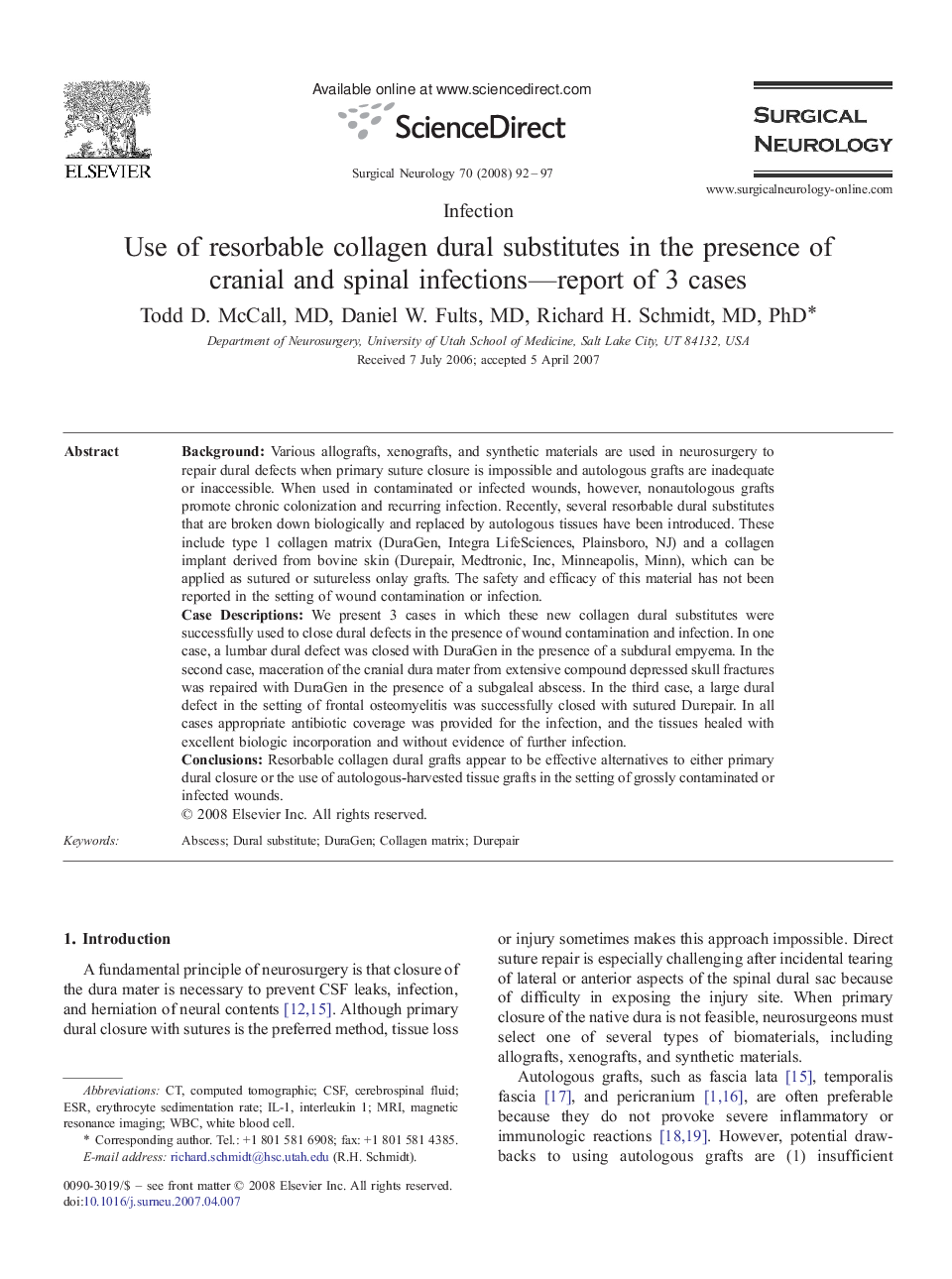| Article ID | Journal | Published Year | Pages | File Type |
|---|---|---|---|---|
| 3092828 | Surgical Neurology | 2008 | 5 Pages |
BackgroundVarious allografts, xenografts, and synthetic materials are used in neurosurgery to repair dural defects when primary suture closure is impossible and autologous grafts are inadequate or inaccessible. When used in contaminated or infected wounds, however, nonautologous grafts promote chronic colonization and recurring infection. Recently, several resorbable dural substitutes that are broken down biologically and replaced by autologous tissues have been introduced. These include type 1 collagen matrix (DuraGen, Integra LifeSciences, Plainsboro, NJ) and a collagen implant derived from bovine skin (Durepair, Medtronic, Inc, Minneapolis, Minn), which can be applied as sutured or sutureless onlay grafts. The safety and efficacy of this material has not been reported in the setting of wound contamination or infection.Case DescriptionsWe present 3 cases in which these new collagen dural substitutes were successfully used to close dural defects in the presence of wound contamination and infection. In one case, a lumbar dural defect was closed with DuraGen in the presence of a subdural empyema. In the second case, maceration of the cranial dura mater from extensive compound depressed skull fractures was repaired with DuraGen in the presence of a subgaleal abscess. In the third case, a large dural defect in the setting of frontal osteomyelitis was successfully closed with sutured Durepair. In all cases appropriate antibiotic coverage was provided for the infection, and the tissues healed with excellent biologic incorporation and without evidence of further infection.ConclusionsResorbable collagen dural grafts appear to be effective alternatives to either primary dural closure or the use of autologous-harvested tissue grafts in the setting of grossly contaminated or infected wounds.
